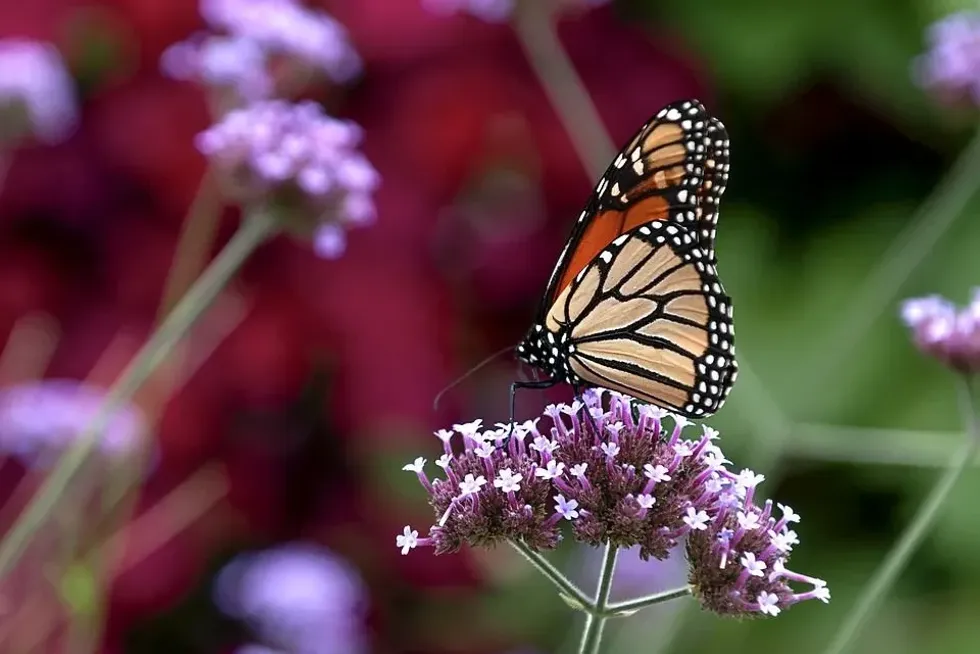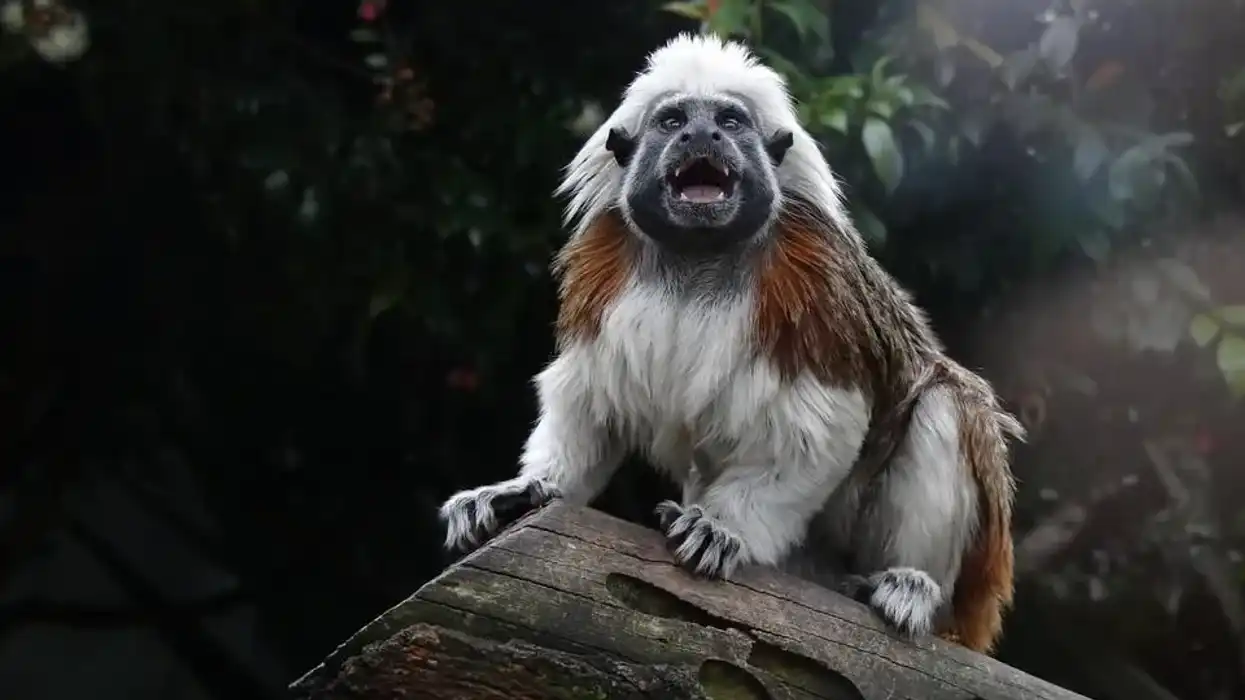What is monarch butterfly meaning? Monarch butterflies, scientifically known as Danaus plexippus, are probably one of the most popular members of the Nymphalidae Family.
These natives of America are distinctly recognized for their coloring and patterns. Monarch butterflies are the ambassadors of nature as well as the attraction of a picture-perfect landscape. Transforming through four stages in life which include the egg, larvae, pupa, and adult, the Danaus plexippus are also referred to as milkweed butterflies.
However, once a common adornment of gardens, these organisms are slumping toward Extinction with massive declines in their population. Besides its enthralling phenotype, the monarch butterfly is also favored for its pollinating abilities and migratory phenomena.
Scientists are also mesmerized by the amazing annual journey of made by these majestic animals. The annual migration journey may extend up to a distance of 3,000 miles. The yellow monarch butterfly Endangered status has not yet been officially recognized by the IUCN and hence they do not enjoy any protection under the Endangered Species Act.
Read on to find out some amazing specifics about monarch butterflies. Here are some interesting monarch butterfly migration facts for you to enjoy. After reading these facts about the monarch butterfly, do check our other articles on purple emperor butterfly and morpho butterflies.
Monarch Butterfly Interesting Facts
What type of animal is a monarch butterfly?
Monarch butterflies are a flutter of butterflies belonging to the Nymphalidae family. Scientifically recognized as Danaus plexippus, these butterflies are widely acknowledged for its beautiful coloring of orange, black and white. Besides the acclaimed identification for their coloring. Monarchs are also known for their migratory habits, pollinating capabilities, and milkweed leaves feeding habits at the larval stage.
What class of animal does a monarch butterfly belong to?
Monarchs belongs to Class Insecta, which is the largest group under phylum Arthropoda. Though a vast diversity prevails in this Class of organisms, characteristics such as jointed appendages, pair of antennae, compound eyes, and a body consisting mainly of the head, thorax, and abdomen are certain traits commonly observed in a majority of the members.
How many monarch butterflies are there in the world?
The population of monarchs have been adversely affected over the last two decades particularly due to loss of habitat and global climatic change. These butterflies are facing a serious plummet, and the present population stands at about 29,000.
The population of monarchs was nearly 1.2 million around 20 years ago. A major decline was first noted in 2017, and ever since, these species of organisms have been nose-diving towards Extinction.
Where does a monarch butterfly live?
The kaleidoscope of monarchs are widely distributed over the terrains of South and North America, the oceanic islands of the Pacific, Canary Islands of the Atlantic, from the Caribbean to Australia, Mauritius and New Zealand.
According to scientists, the monarchs migration across North America is unlike anything else. It is regarded as the greatest natural spectacle on the earth. The monarchs journey can easily go beyond 3,000 miles. Monarchs migration path starts from northeast US and Canada and ends in south-west or central Mexico as well as along the California coast.
What is a monarch butterfly's habitat?
Monarchs habitats depend on factors like breeding and overwintering migratory habits. In the case of overwintering, these butterflies often dwell on a variety of plants and trees such as locusts, basswoods, mulberries, or elms.
Their presence is often dependent on vegetation, sunlight, absence of predators and available water bodies. Whereas in the case of breeding, the adult monarchs are found to be common inhabitants of residential areas, gardens, and host trees.
Who do monarch butterflies live with?
Danaus plexippus form a balanced disposition of their social interactions. The monarchs populations tend to fly solitarily during migration. However, during the night time, monarchs settle with other members of their species, forming large groups. These large groups are called a bivouac or roost. Monarchs are diurnal and they are active during the day.
How long does a monarch butterfly live?
Blue monarchs life span is on an average about two to six weeks. However, the last generation of any given breeding season, enjoys a life cycle of around eight to nine months.
How do they reproduce?
The reproductive cycles in monarchs (Danaus plexippus), begins with courting engagements. During the summer breeding season, (that is, before the migratory dispersion of the overwintering groups), the aerial and ground phase of courtship are practiced by the potential mating partners.
Unlike other members of the butterfly family, the wooing and copulation of these species is fairly less dependent on phrehomes.
Following the aerial courtship, the male adult monarchs pursue the potential female and nudges her. This is followed by eventually forcing the female to the ground, where copulating takes place.
Fertilization between the mates takes place during the ground phase of courting; the procreation takes place a number times to ensure fruitful results. During the ground coupling rituals, the male and the female monarch butterflies remain attached for about 30 to 60 minutes.
Female monarchs usually lay their eggs on the underside of milkweed leaves.
Following this is a gestation period of about eight days during which the eggs develop and hatch, transitioning into the monarch butterfly larvae. Egg, larvae, pupa, and adult are four basic stages in the life cycle of a monarch butterfly.
What is their conservation status?
Presently, monarchs are listed as Endangered under the Endangered Species Act. The population of these members of the Nymphalidae family are declining at massive rates and they are steadily edging towards Extinction. The major reasons for the declining population rates can include habitat loss and global climatic changes.
Monarch Butterfly Fun Facts
What do monarch butterflies look like?
The most striking features of monarchs is their vibrant coloring and patterns. The dorsal side of the wings is shaded with tawny orange tones and possesses a veined pattern—basically, an anatomical adornment of black veins and margins.
The margins are embellished with a series of white spots. The ventral side wings are morphologically similar to the upper side and differ only in their shading, which is a vibrant yellow-brown.
Also, the white spots in this region are comparatively larger. A number of orange spots can also be found on the edges of the forewings of monarchs.
Sexual dimorphism is observed in adult monarch butterflies. The females have thick veins in comparison to their male counterparts, while the male members are larger in size.
Like other members of the Nymphalidae family, these butterflies possess about six legs. Monarchs, due to their larval feeding habits of milkweeds, are known to be poisonous as well.

How cute are they?
Monarch butterflies are herbivorous insects and though they aren’t particularly intimidating given their size, these butterflies contain cardenolides in their bodies which makes them poisonous. However, more than cute, they are beautiful insects to look at owing to their vibrant patterns and colors.
How do they communicate?
Monarchs communicate through colors and scents. Their bright orange wings are indicative of the fact that they are poisonous. The male adult butterfly is said to attract the female adult butterfly by ways of scents and chemicals.
How big is a monarch butterfly?
Usually, the size of a monarch butterfly is indicative from the size of the wings, which are between 3-4 in (7.6-10.1 cm).
How fast can monarch butterflies fly?
The average traveling speed of monarch butterflies is known to be about 5.5 mph (8.8 kmph) and can reach a maximum speed of about 12 mph (19 kmph). Often the flight of these butterflies is described as slow and sailing.
How much does a monarch butterfly weigh?
The weight of monarch butterflies (danaus plexippus) ranges between 0.0005-0.0016 lb (0.008-0.026 oz).
What are the male and female names of the species?
There is no specific name allotted to the members of danaus plexippus species on the basis of their sex. The males are referred to as male monarch butterfly or simply male monarchs, while the females are referred to as female monarch butterfly or female monarchs.
What would you call a baby monarch butterfly?
The offspring of this anthropod is called monarch butterfly caterpillar.
What do they eat?
A significant difference can be noted between the diet of young, and adult members of monarch butterfly. Monarch butterfly young feed on nectar from a wide range of milkweed plants such as Arizona milkweed, California milkweed, Caribbean milkweed and woolly pod milkweed.
Adult monrachs feed on foraging plants like teasel, alfalfa, dame’s rocket, lilac, and tail ironweed for their food requirements.
Are they dangerous?
Generally, monarch butterflies are harmless groups of insects. However, due to their eating habits, particularly during the caterpillar phase of life, these organisms are categorized as poinoes and are inedible to potential predators.
Monarch butterflies, while feeding, store and absorb the toxins present in the poisonous milkweed plant in their bodies. These capabilities contribute to the venomous behavior of these butterflies towards their possible predators such as birds, mice, Chinese mantis and Asian lady beetle.
However, the toxins do not kill these predators. Danaus plexippus is not harmful to the human population.
Would they make a good pet?
Looking to raise monarch butterfly as a pet? Well, it is true that monarch butterflies can make beautiful pets to behold. However, requirements such as providing them with abundant space to fly, availability of nectar in the adult phase and milkweed during the caterpillar phase is necessary. Although, it is quite helpful to develop a butterfly garden.
Did you know...
The flight of Danaus plexippus is known to extend over thousands of miles, particularly during their migratory expeditions.
The oscillation of the wings in monarch butterflies is quite leisurely; that is, in contrast to the average swing of about 18 to 20 times per second in most butterflies, the monarchs are known to wag their wings about five to 12 times.
The caterpillars of Danaus plexippus species are voracious feeders. These creatures are known to exhibit devouring abilities with a particular inclination to milkweed; often, the total amount of milkweed they chomp down is five times their size.
The scientific nomenclature of monarch butterfly, Danaus plexippus, is derived from the Greek language. It stands for sleepy transformation and is used for monarch butterflies due to the transformation procedures of these insects that takes place in their chrysalis.
The Mexican population of monarch butterflies are found primarily in the Monarch Butterfly Biosphere Reserve.
Monarch butterfly symbolism in Christianity is related to future telling and spiritual transformation.
What does it mean when you see a monarch butterfly?
A number of spiritual symbolisms are affixed with monarch butterflies, such as:
According to a number of ancient narratives, the sighting of monarch butterflies are embodied with the presence of guiding hands of heavenly spirits.
It is believed that the appearance of monarch butterflies is to make one realize and believe in the occupancy of angels in their life and the guidance and protection of these angels coming along hand in hand.
Monarchs are also symbolized with transformation and change. Spying these butterflies is an indication to bring about the right and necessary changes in life, no matter how small it might be.
In matters of life, only one holds the control to transform and bring about change, be it negative or positive. Monarch butterflies, in this respect, are epitomized to achieve transformation the right way.
How to draw a monarch butterfly?
Monarch butterfly drawing is very easy. First, observe the linings of a butterfly and start making lines as per the shape of it from a particular angle. Its wings are heart-shaped so draw four separate heart shapes and design them accordingly.
Here at Kidadl, we have carefully created lots of interesting family-friendly animal facts for everyone to discover! Learn more about some other arthropods including mayfly, or house centipede.
You can even occupy yourself at home by drawing one of our Monarch butterfly coloring pages.










